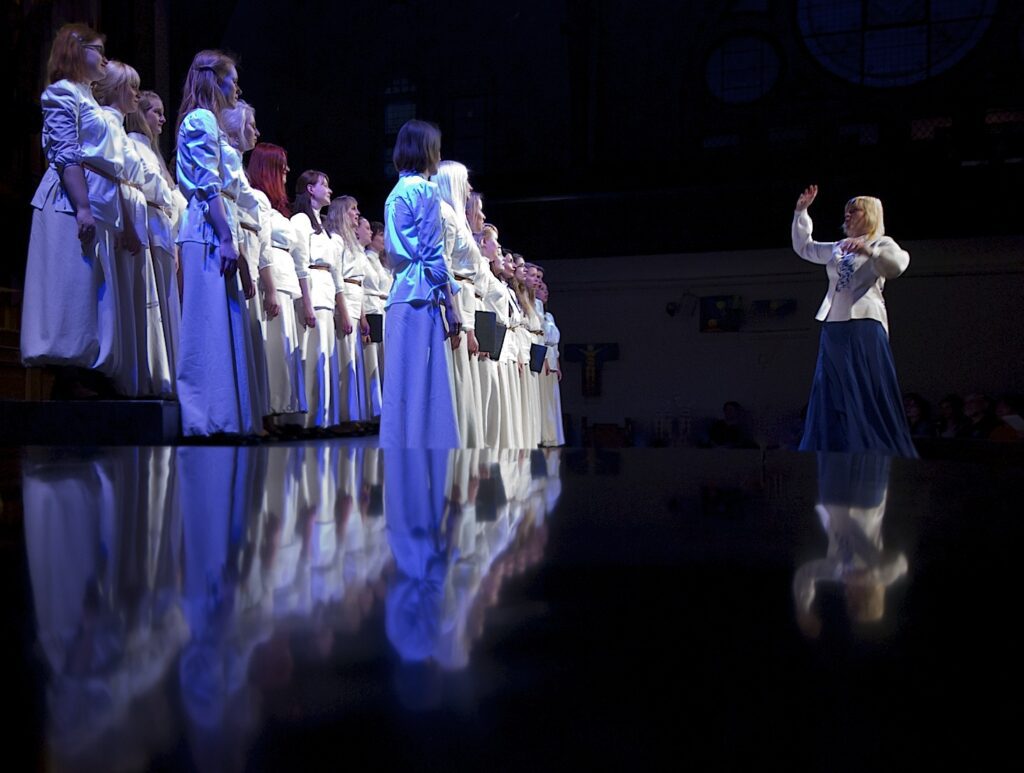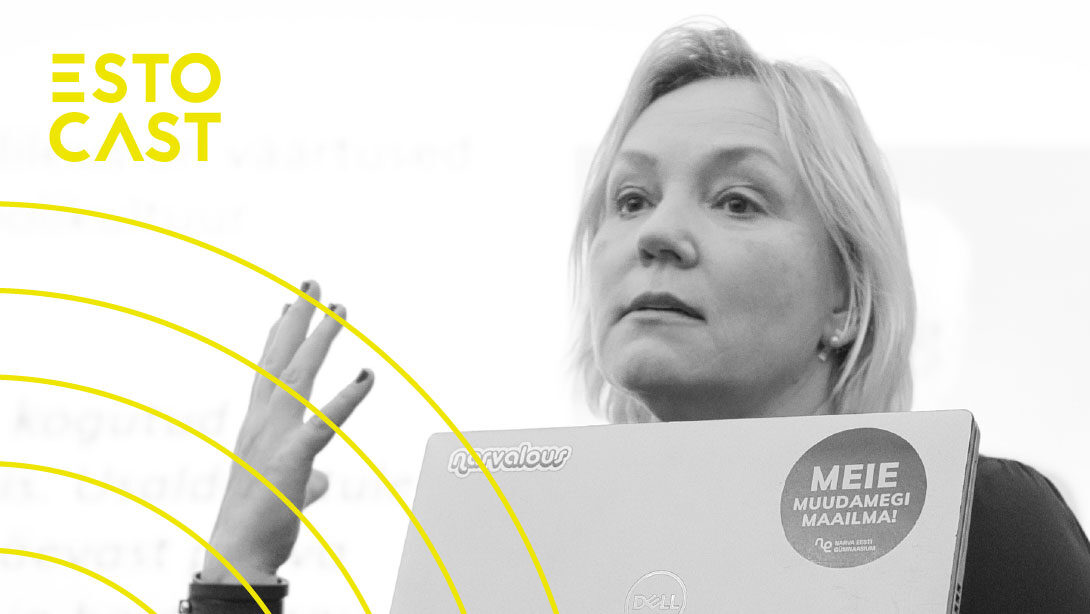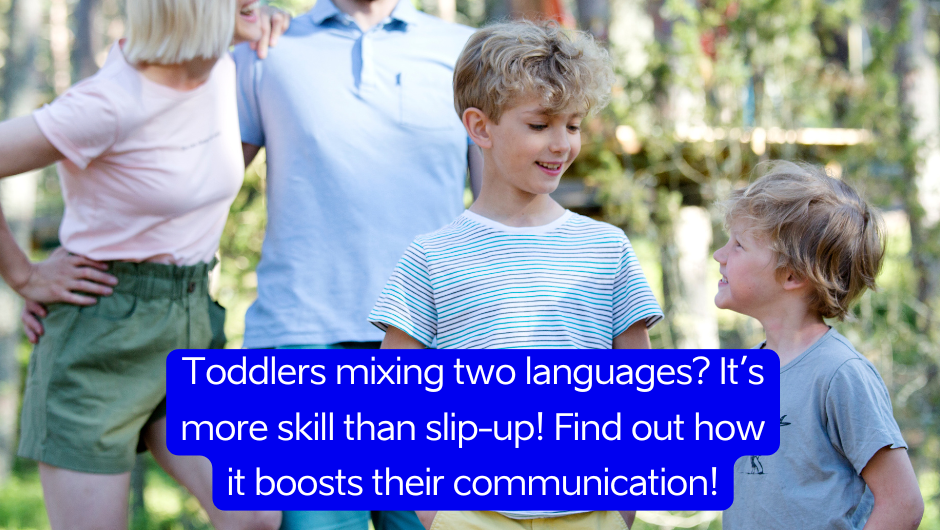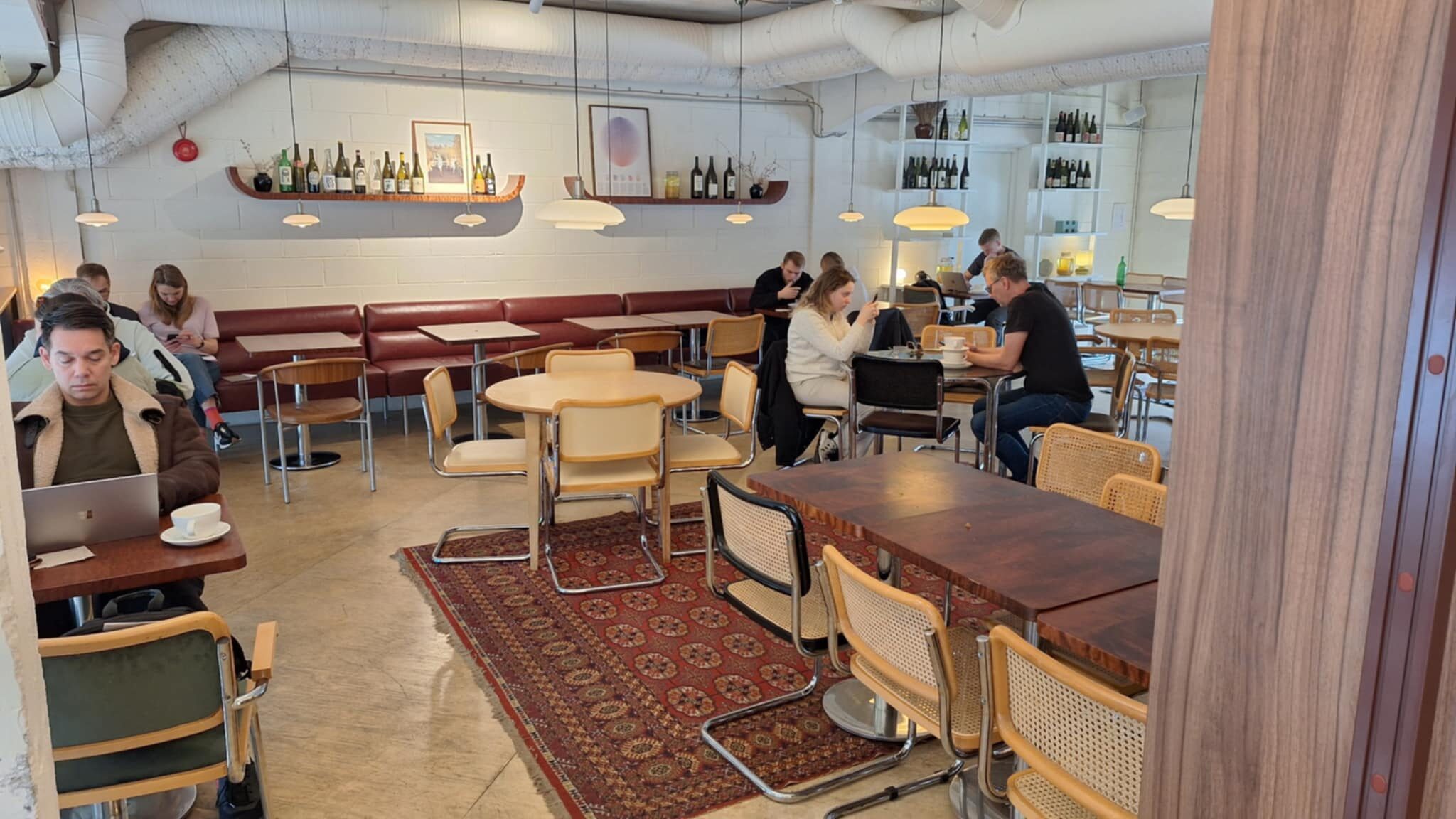Previously, I wrote about what’s involved in preparing for an event as a photographer, from assembling my lenses to staking out the best vantage points with the help of security personnel. But what goes into these photos once I have my camera at the ready?

Before the start of an event I’m due to photograph, I choose a home-base seat location for myself and my camera bag. The ideal location allows me to take photos of the main subject and then allows me to relocate to other vantage points with minimal disruption to the event itself. At Tartu College, for example, my typical location for a speaking event is three or four rows from the podium on the far right. This allows for easy movement around the room but also provides for the standard “speaker at podium” images.
I adjust my camera’s autofocus setting to “pinpoint” to focus on the eyes. “The eyes are the prize” is a photography mentor’s variation on Shakespeare’s “the eyes are the window to your soul.”
Using a performance or presentation at Tartu College as an example, I have a mental checklist of images that I hope to capture, including: signage of the event, the individual introducing the guest, multiple images of the performer/lecturer including close-ups and wider shots, wide images of the entire audience listening, people from the audience asking questions, and the presentation of flowers or gifts, as well as posed photos of the guest with organizers and others from the audience. For musicians, images ideally must include the performer with instrument(s) in action. Facial expressions are vital to convey the energy of the performance. I adjust my camera’s autofocus setting to “pinpoint” to focus on the eyes. “The eyes are the prize” is a photography mentor’s variation on Shakespeare’s “the eyes are the window to your soul.” My images of speakers typically include the podium with the Tartu College name. I try to capture a speaker’s animation as much as possible, often with facial expressions, sometimes with hand and arm gestures. Because many speakers read from their notes extensively, it is often necessary to take many shots before capturing a few with their eyes on the audience. A few images of the speaker’s projected slides are often included, mainly to provide the resulting photo gallery with a snapshot of some key themes of the presentation. An aspect of event photography I need to improve is taking more spontaneous photos of people in the audience, mingling before and after the event and during receptions.
People often ask me how many photos I have taken at a given event. Typically, around 200 photos on the camera will produce a photo gallery of about thirty images for the website. Why so many photos to produce so few? Some images are test shots to check for optimal lighting. For other images, real-time adjustments are needed to change shutter speed or the sensitivity (ISO) of the camera. That is why you will see photographers assessing their photos during the event. Camera shake will cause the main subject to be out of focus and can be corrected with a faster shutter speed. For photos of speakers, it may take twenty or more images to get one with the eyes open and with a pleasing facial expression. For musicians, it may take thirty or more to capture a few with different expressions. At sporting events, the photo count is usually much higher. My camera can shoot more than ten frames per second, thus giving me a chance to catch the best possible moment in an athlete’s performance. For hockey photos, the puck entering the net is an optimal photo.
When musicians are performing on stages with multi-coloured lighting, as encountered on some stages at Estonian Music Week, a red, green, or purple performer’s face appears much nicer when converted to black and white.
After the event, the home desktop computer awaits with its editing software. Using the above-mentioned 200 photos as an example, editing usually takes about two hours to produce a photo gallery for Estonian Life as well as a ten-image posting to Instagram. In addition, I will produce a collection of images for the performer or speaker if requested. If the camera settings at the event were accurate, editing is correspondingly easier. Virtually all photos from the camera will benefit from some cropping. For Estonian Life photo galleries, no crop dimension restrictions apply, unlike Instagram’s need for the 1X1 format. Some photos will require minor exposure adjustments. Those images that were taken with ambient light (thus requiring a higher ISO setting) will require a “denoise” adjustment to minimize the grainy nature of the image. Some photos benefit from conversion to black and white. Photos of projected slides are an example, as colour distortion is often present. When musicians are performing on stages with multi-coloured lighting, as encountered on some stages at Estonian Music Week, a red, green, or purple performer’s face appears much nicer when converted to black and white.
My hope is that my photo galleries will primarily serve an archival purpose, documenting the important aspects of the events that I am fortunate enough to capture for the Estonian-Canadian community. My approach is photojournalistic, with an emphasis on good lighting and sharp focus. However, I do enjoy attempting to include some photos that may be viewed as more artistic, though I leave that judgement to others. Ultimately, sharing the images brings me the most joy and I am grateful for the opportunity that the editors of Estonian Life have given me over the past decades.



